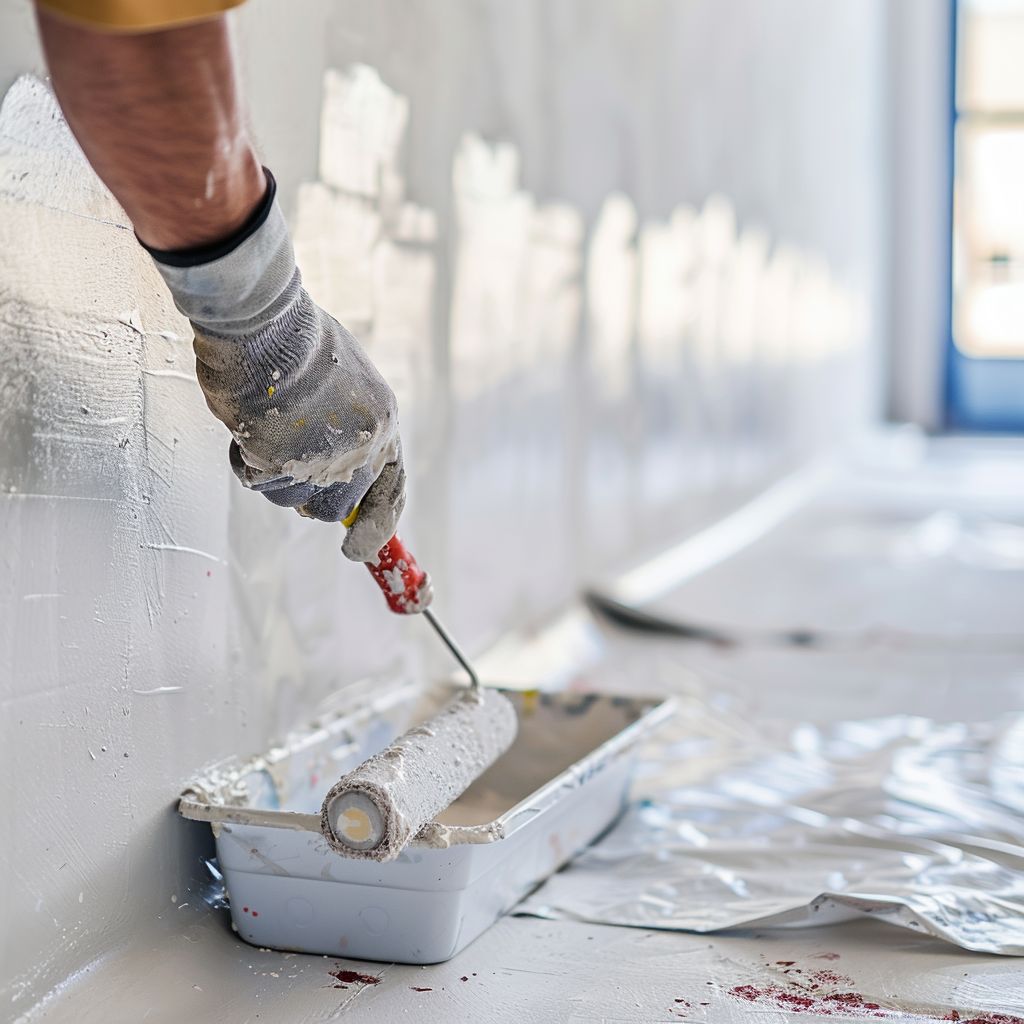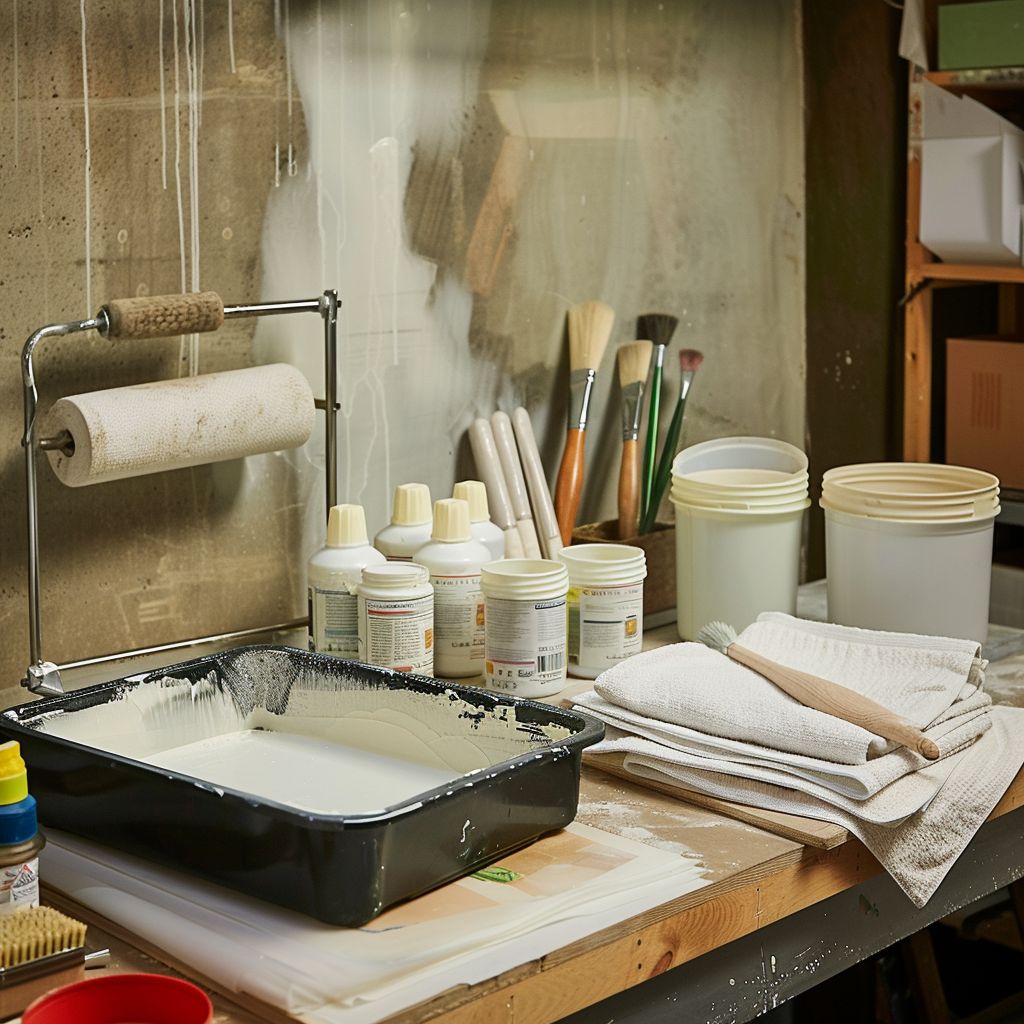The Importance of the Base Coat in Venetian Plaster Applications
The base coat is the foundation of a flawless Venetian plaster finish. It prepares the surface, ensuring that the plaster adheres properly and creates a smooth, durable layer. Without the right base coat, even the highest-quality Venetian plaster can fail to achieve its desired look and longevity. Therefore, selecting and applying the correct base coat is a critical step in the Venetian plastering process.
How the Right Base Coat Sets the Foundation
A well-chosen base coat addresses several key factors: surface uniformity, adhesion strength, and compatibility with subsequent plaster layers. By providing a stable, receptive surface, the base coat minimises the risk of plaster peeling or cracking. This is especially important in a city like Sydney, where varying climate conditions can affect building materials. A properly applied base coat ensures that the Venetian plaster finish remains beautiful and intact for years to come.

Choosing the Right Base Coat
Types of Base Coats for Venetian Plaster
Acrylic-Based Coats
Acrylic-based base coats are known for their excellent adhesion properties and versatility. These base coats are particularly suitable for a variety of surfaces, including drywall and previously painted walls. The flexibility of acrylic makes it a good choice for areas that might experience slight movements or shifts, ensuring that the plaster remains intact without cracking.
Lime-Based Coats
Lime-based base coats are the traditional choice for Venetian plaster, especially for those seeking an authentic, classic finish. These base coats are breathable and work well with lime-based plasters, creating a chemical bond that enhances durability. Lime-based coats are ideal for historic restorations and applications where maintaining traditional techniques is important.
Universal Primers
Universal primers offer a versatile solution that can be used on various substrates. These primers provide a good balance between adhesion, flexibility, and ease of application. They are suitable for different types of surfaces, making them a practical choice for projects involving multiple materials.
Factors to Consider When Selecting a Base Coat
Surface Type
The type of surface you are working with significantly influences the choice of base coat. For instance, drywall may require an acrylic-based coat for better adhesion, while lime-based coats are preferred for masonry or surfaces that need to breathe. Understanding the substrate helps in selecting a base coat that will perform optimally.
Project Requirements
Consider the specific needs of your project when choosing a base coat. Factors such as the desired aesthetic, the type of Venetian plaster being applied, and the environmental conditions play crucial roles. For example, a high-humidity environment may benefit from a breathable, lime-based coat to prevent moisture build-up.
Specific Needs for Sydney’s Climate
Sydney’s climate, characterised by its humidity and temperature fluctuations, can impact the performance of Venetian plaster. Selecting a base coat that accommodates these conditions is essential. Acrylic-based coats may offer better performance in areas with high humidity due to their flexibility and water resistance. Lime-based coats, with their breathability, can help manage moisture and prevent mold growth.
Techniques for Applying Base Coats
Preparation Steps
Surface Cleaning
Before applying the base coat, it’s crucial to ensure the surface is clean and free of dust, grease, and debris. Use a mild detergent solution to clean the surface thoroughly, then rinse with clean water. Allow the surface to dry completely before proceeding. Proper cleaning enhances adhesion and prevents imperfections in the final plaster finish.
Surface Repair
Inspect the surface for any cracks, holes, or uneven areas. Use a patching compound to fill in these imperfections and sand the surface smooth once the compound is dry. Ensuring a smooth, even base is vital for a flawless Venetian plaster application. This step helps in creating a uniform base for the base coat, ensuring optimal adhesion and a smooth final finish.

Application Process
Tools and Materials Needed
- Paint Roller or Brush: For even application of the base coat.
- Paint Tray: To hold the base coat for easy access during application.
- Drop Cloths or Protective Coverings: To protect the surrounding area from spills and splatters.
Step-by-Step Application Guide
Mixing the Base Coat
- Read the Instructions: Always follow the manufacturer’s instructions for mixing the base coat.
- Stir Thoroughly: Use a stir stick or a mechanical mixer to blend the base coat until it reaches a smooth, uniform consistency.
Applying the First Layer
- Pour into Paint Tray: Pour the mixed base coat into a paint tray.
- Load the Roller or Brush: Dip the roller or brush into the base coat, ensuring it is evenly coated.
- Apply Evenly: Start from the top of the wall and work your way down, using smooth, overlapping strokes to apply the base coat evenly across the surface.
- Cover All Areas: Ensure all areas, including edges and corners, are covered with a consistent layer.
Applying Additional Layers
- Drying Time: Allow the first layer to dry completely according to the manufacturer’s instructions before applying additional layers.
- Second Layer: Apply a second layer using the same method, ensuring even coverage and uniform thickness.
- Final Inspection: Once all layers are applied and dried, inspect the surface for any missed spots or imperfections.
Edge and Corner Work
- Detail Brushes: Use smaller brushes for edges and corners to achieve precise coverage.
- Smooth Transitions: Ensure transitions between sections are smooth and seamless.
Best Practices for Optimal Results
Avoiding Common Mistakes
- Do Not Overload the Roller or Brush: Avoid overloading the roller or brush with too much base coat, which can lead to drips and uneven application.
- Work in Sections: Work in manageable sections to maintain a wet edge and prevent lap marks.
- Consistent Pressure: Apply consistent pressure to the roller or brush to ensure an even coat.
Safety Tips
- Proper Ventilation: Ensure the area is well-ventilated during application to avoid inhaling fumes.
- Protective Gear: Wear protective gear such as gloves and safety goggles to protect your skin and eyes.
Drying Time Considerations
Standard Drying Times for Different Base Coats
Acrylic-Based Coats
Acrylic-based base coats typically dry faster than other types. Under optimal conditions, they can dry to the touch within 1-2 hours and be ready for the next layer or the Venetian plaster application in about 4-6 hours. These quick drying times make acrylic-based coats a convenient choice for projects with tight schedules.
Lime-Based Coats
Lime-based base coats have a slower drying time, usually requiring 24-48 hours to dry completely. This extended drying period is crucial for ensuring that the base coat fully sets and bonds with the substrate, providing a stable foundation for the Venetian plaster.
Factors Influencing Drying Times
Environmental Conditions
Sydney’s climate, with its humidity and temperature fluctuations, can significantly impact drying times. Higher humidity levels can slow down the drying process, while warmer temperatures can accelerate it. It’s important to consider these factors and adjust your timeline accordingly.
Application Thickness
The thickness of the applied base coat also affects drying times. Thicker layers take longer to dry, while thinner layers dry more quickly. For best results, apply multiple thin layers rather than one thick layer to ensure even drying and reduce the risk of cracking.
Tips for Ensuring Proper Drying
Optimal Temperature and Humidity
Aim to apply the base coat in a controlled environment where the temperature is between 18-24°C (64-75°F) and the humidity is between 40-60%. These conditions promote optimal drying and curing of the base coat.
Ventilation and Airflow
Ensure that the application area is well-ventilated to facilitate the drying process. Use fans or open windows to increase air circulation. Good airflow helps to evaporate moisture from the base coat, speeding up the drying time.
Drying Aids
In cases where environmental conditions are not ideal, consider using drying aids such as dehumidifiers or heaters. These tools can help maintain a stable environment and accelerate the drying process. However, avoid using them excessively, as rapid drying can lead to cracks or other issues.
Conclusion
Recap of the Importance of Choosing and Applying the Right Base Coat
The base coat is a crucial component in the Venetian plastering process, serving as the foundation for a smooth and durable finish. Selecting the right base coat, whether acrylic-based, lime-based, or a universal primer, and applying it correctly ensures that the plaster adheres properly and achieves the desired aesthetic. Proper surface preparation, including cleaning and repairing, followed by meticulous base coat application, sets the stage for a successful Venetian plaster project.
Summary of Key Techniques and Drying Time Considerations
- Choosing the Right Base Coat: Consider the type of surface, project requirements, and specific needs for Sydney’s climate to select the most suitable base coat.
- Preparation Steps: Thoroughly clean and repair the surface to create a smooth, even base.
- Application Techniques: Use the correct tools and follow a step-by-step process to apply the base coat evenly, ensuring complete coverage and smooth transitions.
- Drying Time Considerations: Factor in environmental conditions and application thickness to determine the appropriate drying times. Maintain optimal temperature and humidity levels and ensure proper ventilation for the best results.
Final Tips for Achieving a Flawless Venetian Plaster Base in Sydney
- Thorough Inspection: Regularly inspect the surface at each stage to ensure no imperfections are overlooked.
- Quality Materials: Use high-quality base coats and tools to achieve the best results.
- Patience: Allow adequate drying time between each step to ensure the base coat is fully set before applying the Venetian plaster.
By following these guidelines, you can ensure a smooth, professional finish for your Venetian plaster project, enhancing the beauty and durability of your walls in any Sydney environment.
Base Coat Application Services by Venetian Plasterer in Sydney
At Venetian Plasterer, we understand the critical role of a well-applied base coat in achieving a perfect Venetian plaster finish. Providing expert Venetian plastering services across Sydney, our team meticulously handles every step of the base coat application process. From selecting the right base coat to ensuring optimal drying conditions, we guarantee a flawless foundation for your Venetian plaster. Trust Venetian Plasterer for all your Venetian plaster needs in Sydney, and experience the difference that professional surface preparation makes.
Related
Venetian Plaster Layering: First, Second, and Third Layers, Achieving Smoothness

